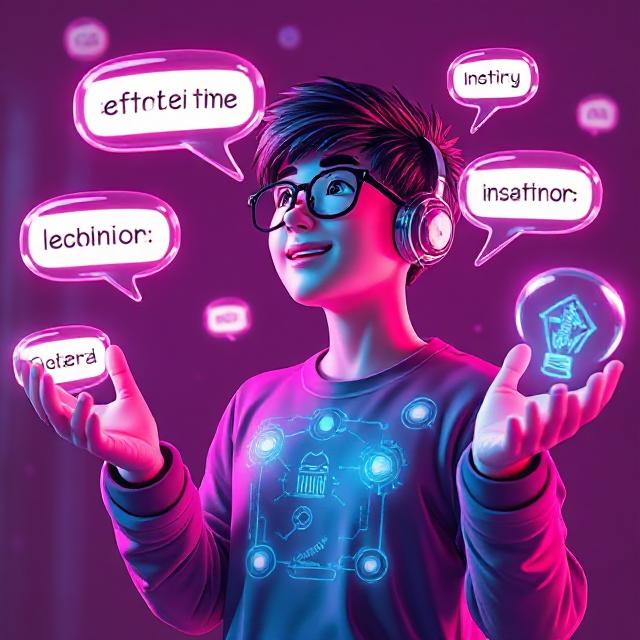
I still remember the first time I tried to order food in Spanish. I had studied the textbook dialogues, drilled the grammar charts, and even memorized a few “essential phrases.” Yet when I faced the waiter, I froze. The words felt like they were locked behind glass. Later that night, I realized my mistake wasn’t lack of effort — it was practicing in isolation, without feedback that mirrored the real world.
In my years designing language programs for professionals and universities, I’ve seen the same patterns play out again and again. Learners fall into predictable traps, from over-relying on memorization to avoiding mistakes altogether. The good news? With AI tutors and adaptive platforms, many of these obstacles are fixable — faster, cheaper, and more effectively than ever. Below are 10 common mistakes when learning a language and how AI fixes them, with insights from real-world projects and learners I’ve coached.
Mistake 1: Memorizing Instead of Practicing
Too many learners treat language like math: if you memorize enough formulas, fluency will follow. But language lives in use, not in notebooks. I once coached a Japanese engineer who could conjugate 12 irregular verbs on paper but froze in conversation.
AI Fix: Conversational AI forces learners to apply grammar in real dialogue. Instead of memorizing lists, you’re prompted to produce words naturally in context.
Mistake 2: Avoiding Mistakes at All Costs
Many learners are perfectionists. They’d rather stay silent than risk sounding foolish. I’ve seen executives in global firms refuse to speak in meetings for fear of “losing face.”
AI Fix: AI provides a judgment-free practice space. Learners can repeat, mispronounce, and fumble without embarrassment — building confidence privately before live use.
Mistake 3: Practicing Too Little, Too Infrequently
Weekly classes and weekend cram sessions don’t build fluency. Without frequency, retention collapses.
AI Fix: Adaptive systems use spaced repetition to deliver practice exactly when you’re about to forget — turning idle minutes into high-value micro-learning sessions.
Mistake 4: Ignoring Pronunciation Early
Many learners only address pronunciation after years of study, when fossilized habits are harder to fix.
AI Fix: AI-powered pronunciation tools analyze waveforms and intonation in real time. In one pilot, a learner mastered tricky English sounds within weeks after years of frustration.
Mistake 5: Over-Reliance on Translation
Thinking in your first language before speaking slows fluency. Learners get trapped in “mental translation” mode.
AI Fix: AI platforms immerse learners directly in the target language. Some even block translation crutches, pushing direct comprehension and faster recall.
Mistake 6: Lack of Feedback
Traditional self-study apps give shallow feedback: right or wrong. Learners plateau because they can’t catch subtle errors in tone or word choice.
AI Fix: Modern AI tutors provide detailed corrections and alternative phrasing instantly — a feedback loop that accelerates improvement.
Mistake 7: Ignoring Listening Skills
Many learners can write and read better than they can understand fast, natural speech. Native speed overwhelms them.
AI Fix: AI listening drills adjust playback speed, accents, and complexity — slowly building comfort with real-world pace until confidence sticks.
Mistake 8: Sticking to One Learning Style
Some learners only read, others only listen. But fluency demands balance across listening, speaking, reading, and writing.
AI Fix: Adaptive AI notices imbalance and introduces missing skills. A learner focused only on reading, for example, may be nudged into listening and speaking drills automatically.
Mistake 9: Not Connecting Learning to Real-Life Goals
Without context, language stays abstract. Professionals often study for years but falter in interviews or meetings.
AI Fix: AI roleplays mimic real tasks — interviews, pitches, casual conversations — giving learners rehearsal in the exact contexts where they’ll use the language.
Mistake 10: Quitting Too Early
Motivation often collapses after the initial excitement. Many plateau at intermediate level and give up.
AI Fix: Gamification, streaks, and progress dashboards keep motivation alive. Learners see visible progress — words learned, errors reduced — fueling consistency through the tough middle stage.
Conclusion
Language learning is rarely about raw talent — it’s about avoiding predictable traps. AI now fixes many of these gaps, often within weeks. But don’t mistake it for a replacement. The real power is combining AI’s tireless feedback with human nuance.
Call to Action: Audit your own learning. Spot which of these 10 mistakes you’re making and let AI cover those gaps. Then, pair it with authentic human interaction. That’s how fluency happens.